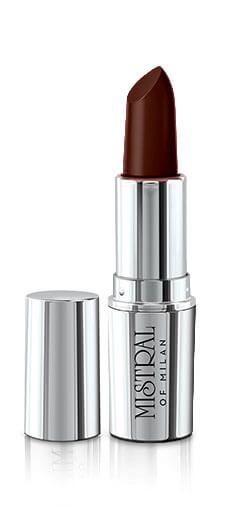In the nineteenth century, lipstick was shaded with carmine color. Carmine color was separated from cochineal, scale creepy crawlies local to Mexico and Central America which live on desert flora plants. Cochineal bugs produce carminic corrosive to prevent predation by different bugs. Carminic corrosive, which structures 17% to 24% of the heaviness of the dried bugs, can be extricated from the creepy crawly's body and eggs. Blended in with aluminum or calcium salts it makes carmine color (otherwise called cochineal).36 This lipstick didn't arrive in a cylinder; it was applied with a brush. Carmine color was costly and the vibe of carmine shaded lipstick was viewed as unnatural and dramatic, so lipstick was disliked for ordinary wear. Just entertainers and entertainers could pull off wearing lipstick. In 1880, barely any stage entertainers wore lipstick in public. The acclaimed entertainer, Sarah Bernhardt, started wearing lipstick and rouge out in the open. Prior to the late nineteenth century, ladies just applied cosmetics at home. Bernhardt regularly applied carmine color to her lips in public36 In the mid 1890s, carmine was blended in with an oil and wax base. The blend gave a characteristic look and it was more worthy among ladies. Around then, lipstick was not sold in botch metal cylinder; it was sold in paper tubes, colored papers, or in little pots. The Sears Roebuck index initially offered rouge for lips and cheeks by the last part of the 1890s. A kid with lipstick By 1912 elegant American ladies had come to consider lipstick satisfactory, however an article in the New York Times prompted on the need to apply it cautiously. By 1915, lipstick was sold in chamber metal compartments, which had been concocted by Maurice Levy. Ladies needed to slide a small switch along the edge of the cylinder with the edge of their fingernail to move the lipstick up to the highest point of the case, in spite of the fact that lipsticks in push-up metal holders had been accessible in Europe since 1911. In 1923, the primary turn up cylinder was protected by James Bruce Mason Jr. in Nashville, Tennessee. As ladies began to wear lipstick for photos, photography made lipstick satisfactory among ladies. Elizabeth Arden and Estee Lauder started selling lipstick in their salons. During the Second World War, metal lipstick tubes were supplanted by plastic and paper tubes. Lipstick was scant during that time since a portion of the fundamental elements of lipstick, oil and castor oil, were unavailable.:50 World War II permitted ladies to work in designing and logical exploration, and in the last part of the 1940s, Hazel Bishop, a natural scientific expert in New York and New Jersey, made the main durable lipstick, called No-Smear lipstick. With the assistance of Raymond Specter, a publicist, Bishop's lipstick business flourished. Another type of lip tone, a without wax, semi-lasting fluid recipe, was concocted during the 1990s by the Lip-Ink International organization. Different organizations have imitated the thought, putting out their own variants of durable "lip stain" or "fluid lip tone."
Advertisement
Popular Posts

Lip Gloss - Sensational 003
January 02, 2021

Lipstick - Mandarin 016
December 21, 2020
Subscribe Us
Categories
Recent Posts
3/recent/post-list
Recent in Recipes
3/Food/post-list
Menu Footer Widget
Crafted with by TemplatesYard | Distributed by Blogger Template

0 Comments
please do not put any spamlink in comment box